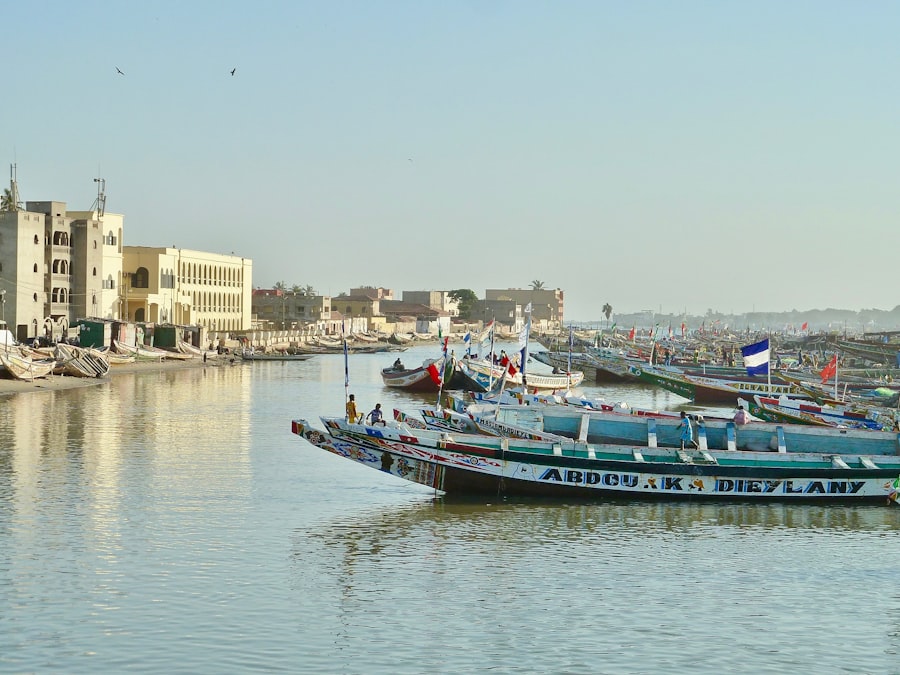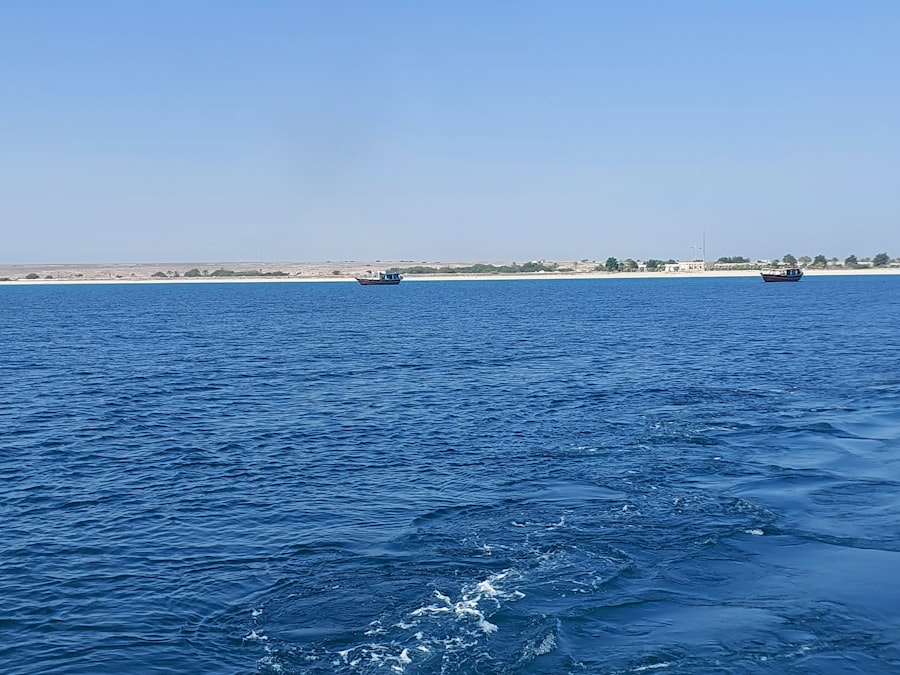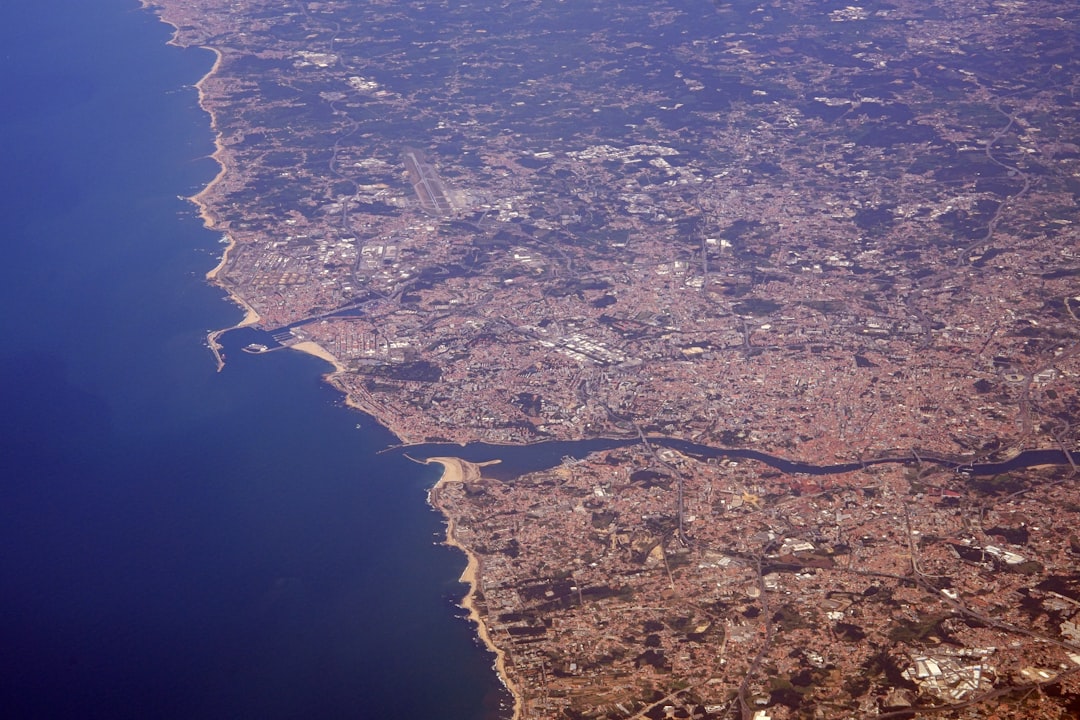The Suez Canal, a vital artery for global trade, connects the Mediterranean Sea to the Red Sea, allowing ships to bypass the lengthy journey around Africa. In March 2021, the world witnessed a significant disruption when the Ever Given, a massive container ship, became lodged in the canal, blocking one of the busiest maritime routes for six days. This incident highlighted the vulnerabilities inherent in global shipping logistics and the potential for a single event to have far-reaching consequences.
The blockage not only halted the movement of goods but also underscored the reliance of international trade on this narrow passage. The circumstances surrounding the blockage were multifaceted. The Ever Given ran aground due to a combination of poor visibility, high winds, and human error.
As the ship became wedged in the canal, efforts to dislodge it began almost immediately. Tugboats and dredgers were deployed, but the sheer size of the vessel complicated rescue operations. The incident drew global attention, as it became clear that the ramifications would extend beyond the immediate area, affecting economies and supply chains worldwide.
Key Takeaways
- The Suez Canal blockage caused by the Ever Given container ship had a significant impact on global trade and supply chains.
- The economic impact of the Suez Canal blockage was estimated to be billions of dollars per day, affecting various industries and causing delays in the delivery of goods.
- Global trade disruptions were felt worldwide as hundreds of ships were stranded and unable to pass through the canal, leading to a backlog of goods and increased shipping costs.
- Alternative shipping routes, such as the Cape of Good Hope, were utilized to bypass the Suez Canal blockage, but these routes added significant time and cost to shipping operations.
- The Suez Canal blockage caused supply chain disruptions, leading to shortages of goods and increased prices for consumers around the world.
Economic Impact of the Suez Canal Blockage
The economic repercussions of the Suez Canal blockage were profound and immediate. Estimates suggested that billions of dollars in trade were delayed each day the canal remained closed. The blockage disrupted not only shipping schedules but also the flow of goods essential for various industries, from electronics to food supplies.
Businesses that relied on just-in-time inventory systems faced significant challenges, as delays in receiving components or finished products could halt production lines and lead to financial losses. Moreover, the incident prompted a reevaluation of shipping costs and logistics strategies. Companies began to assess their dependencies on specific routes and ports, recognizing that reliance on a single passage could expose them to risks.
The blockage served as a wake-up call for many businesses, leading them to consider diversifying their supply chains and exploring alternative shipping methods to mitigate future disruptions.
Global Trade Disruptions

The blockage of the Suez Canal reverberated throughout global trade networks, causing a ripple effect that impacted economies far beyond Egypt’s borders. As vessels were stranded or rerouted, delays in deliveries became commonplace. Retailers faced shortages of goods, leading to empty shelves in stores and increased prices for consumers.
The incident highlighted how interconnected global trade has become; a disruption in one location can have cascading effects across continents. In addition to immediate shortages, the blockage also raised concerns about inflation. With supply chains strained and demand remaining steady or increasing, prices for various goods began to rise.
Economists warned that prolonged disruptions could lead to more significant inflationary pressures, affecting everything from consumer electronics to food prices. The incident underscored the fragility of global supply chains and the potential for localized events to trigger widespread economic consequences.
Alternative Shipping Routes
| Route | Distance (miles) | Transit Time (days) | Cost (USD) |
|---|---|---|---|
| Panama Canal | 51 | 1 | 5000 |
| Suez Canal | 120 | 2 | 8000 |
| Cape of Good Hope | 300 | 5 | 10000 |
In response to the Suez Canal blockage, shipping companies began exploring alternative routes to circumvent the disruption. One such option was the longer journey around the Cape of Good Hope at the southern tip of Africa. While this route added significant time and distance to shipping schedules, it provided a viable alternative for vessels unable to pass through the canal.
However, this detour came with its own set of challenges, including increased fuel costs and potential delays due to weather conditions. The exploration of alternative routes also sparked discussions about the future of maritime logistics. Some industry experts suggested that investing in infrastructure improvements at other ports could help alleviate congestion and provide more options for shipping companies.
Additionally, advancements in technology and navigation systems could enhance route planning and efficiency, allowing vessels to adapt more quickly to unforeseen disruptions.
Supply Chain Disruptions
The Suez Canal blockage served as a stark reminder of how fragile supply chains can be in an increasingly interconnected world. Many industries rely on a complex web of suppliers and logistics providers to deliver goods efficiently. When one link in that chain is disrupted, it can lead to significant delays and complications throughout the entire system.
Manufacturers found themselves grappling with shortages of raw materials, while retailers faced challenges in restocking their shelves. As businesses navigated these disruptions, many began to reassess their supply chain strategies. Some companies opted to increase inventory levels as a buffer against future disruptions, while others explored local sourcing options to reduce reliance on distant suppliers.
The incident prompted a broader conversation about resilience in supply chains and the importance of flexibility in adapting to unexpected challenges.
Impact on Oil and Gas Prices

The Suez Canal is not only crucial for container shipping but also plays a significant role in the transportation of oil and gas. The blockage had immediate implications for energy markets, as tankers carrying crude oil and liquefied natural gas were unable to transit through the canal. This disruption led to fluctuations in oil prices, with markets reacting to concerns about supply shortages and potential delays in deliveries.
As vessels were rerouted or delayed, analysts closely monitored price movements in global oil markets. The incident highlighted how geopolitical events and logistical challenges can influence energy prices, affecting consumers and businesses alike. In response to rising prices, some countries considered strategic reserves or alternative sources of energy to mitigate potential shortages.
Efforts to Clear the Suez Canal
Efforts to clear the Suez Canal following the blockage were extensive and involved a coordinated response from various stakeholders. Salvage teams worked tirelessly to dislodge the Ever Given using tugboats, dredgers, and excavators. The operation was complicated by the ship’s size and weight, requiring careful planning and execution to avoid further damage or accidents.
Shipping companies and governments alike were eager for a swift resolution to restore normalcy to global trade routes. The successful refloating of the Ever Given after six days marked a significant achievement for salvage teams but also served as a reminder of the complexities involved in maritime logistics.
Legal Implications of the Blockage
The legal ramifications of the Suez Canal blockage were complex and multifaceted. As discussions about liability began, questions arose regarding who would be held responsible for damages incurred during the incident. Shipping companies faced potential claims from cargo owners for losses resulting from delays, while insurers grappled with how to assess claims related to the blockage.
Additionally, legal experts examined international maritime law and its implications for incidents like this one. The situation raised questions about jurisdiction and liability in cases where vessels operate in international waters but are subject to local laws and regulations. As stakeholders navigated these legal complexities, it became clear that future incidents could prompt further discussions about maritime law reform.
Lessons Learned from the Suez Canal Blockage
The Suez Canal blockage provided valuable lessons for businesses, governments, and shipping companies alike. One key takeaway was the importance of resilience in supply chains; organizations learned that diversifying suppliers and routes could mitigate risks associated with disruptions.
Furthermore, the incident underscored the significance of investing in infrastructure improvements and technological advancements within the shipping industry. Enhanced navigation systems and better port facilities could help prevent similar incidents in the future while improving overall efficiency in global trade.
Future Precautions for Global Shipping
In light of the Suez Canal blockage, stakeholders across the shipping industry began discussing future precautions to enhance resilience against disruptions. One proposed measure was increased investment in training for crew members and port personnel to ensure they are equipped to handle emergencies effectively. Improved communication systems between vessels and shore-based operations could also facilitate quicker responses during crises.
Moreover, there was a growing consensus on the need for collaboration among shipping companies, governments, and international organizations to develop comprehensive contingency plans for potential disruptions. By sharing best practices and resources, stakeholders could work together to create a more robust framework for global shipping that minimizes risks associated with unforeseen events.
Environmental Impact of the Suez Canal Blockage
The environmental implications of the Suez Canal blockage were another critical aspect that emerged during discussions surrounding the incident. As vessels were forced to reroute around Africa or remain idle in congested waters, concerns arose about increased emissions from ships burning additional fuel during longer journeys. The environmental impact extended beyond air quality; potential oil spills or accidents during salvage operations posed risks to marine ecosystems.
Additionally, environmental advocates emphasized the need for sustainable practices within the shipping industry moving forward. The incident served as a reminder that while global trade is essential for economic growth, it must be balanced with environmental considerations. As stakeholders reflected on lessons learned from the blockage, discussions about reducing carbon footprints and adopting greener technologies gained momentum within maritime logistics.
In conclusion, the Suez Canal blockage was a pivotal event that illuminated vulnerabilities within global trade networks while prompting discussions about resilience, legal implications, and environmental considerations in shipping practices. As stakeholders continue to navigate these complexities, it is clear that lessons learned from this incident will shape future strategies aimed at enhancing efficiency and sustainability within maritime logistics.
The Suez Canal blockage in March 2021 was a significant event that highlighted the vulnerabilities in global trade routes. The incident, caused by the grounding of the Ever Given container ship, led to a massive backlog of ships and delayed the delivery of goods worldwide. This event underscored the importance of understanding and managing global logistics and trade routes. For more insights into the geographical and logistical challenges faced by such critical waterways, you can explore a related article on MyGeoQuest, which delves into the complexities of global trade and the strategic importance of the Suez Canal.
WATCH NOW! Unlocking Disaster: 7 Choke Points That Could Fracture Our Connected World Overnight
FAQs
What is the Suez Canal Blockage?
The Suez Canal Blockage refers to the incident in March 2021 when a large container ship, the Ever Given, became stuck in the Suez Canal, blocking the crucial waterway for six days.
How did the Suez Canal Blockage occur?
The blockage occurred when the Ever Given, a 400-meter-long container ship, ran aground during a sandstorm, causing it to become lodged sideways in the canal.
What were the consequences of the Suez Canal Blockage?
The blockage caused a significant disruption to global trade, as hundreds of ships were unable to pass through the canal, leading to delays in the delivery of goods and increased shipping costs.
How was the Suez Canal Blockage resolved?
The blockage was resolved after six days, when a combination of dredging, tugboats, and high tides helped to refloat the Ever Given and free it from the canal.
What measures have been taken to prevent future blockages in the Suez Canal?
Following the incident, the Suez Canal Authority has announced plans to widen and deepen parts of the canal, as well as improve navigation and communication systems to reduce the risk of future blockages.
